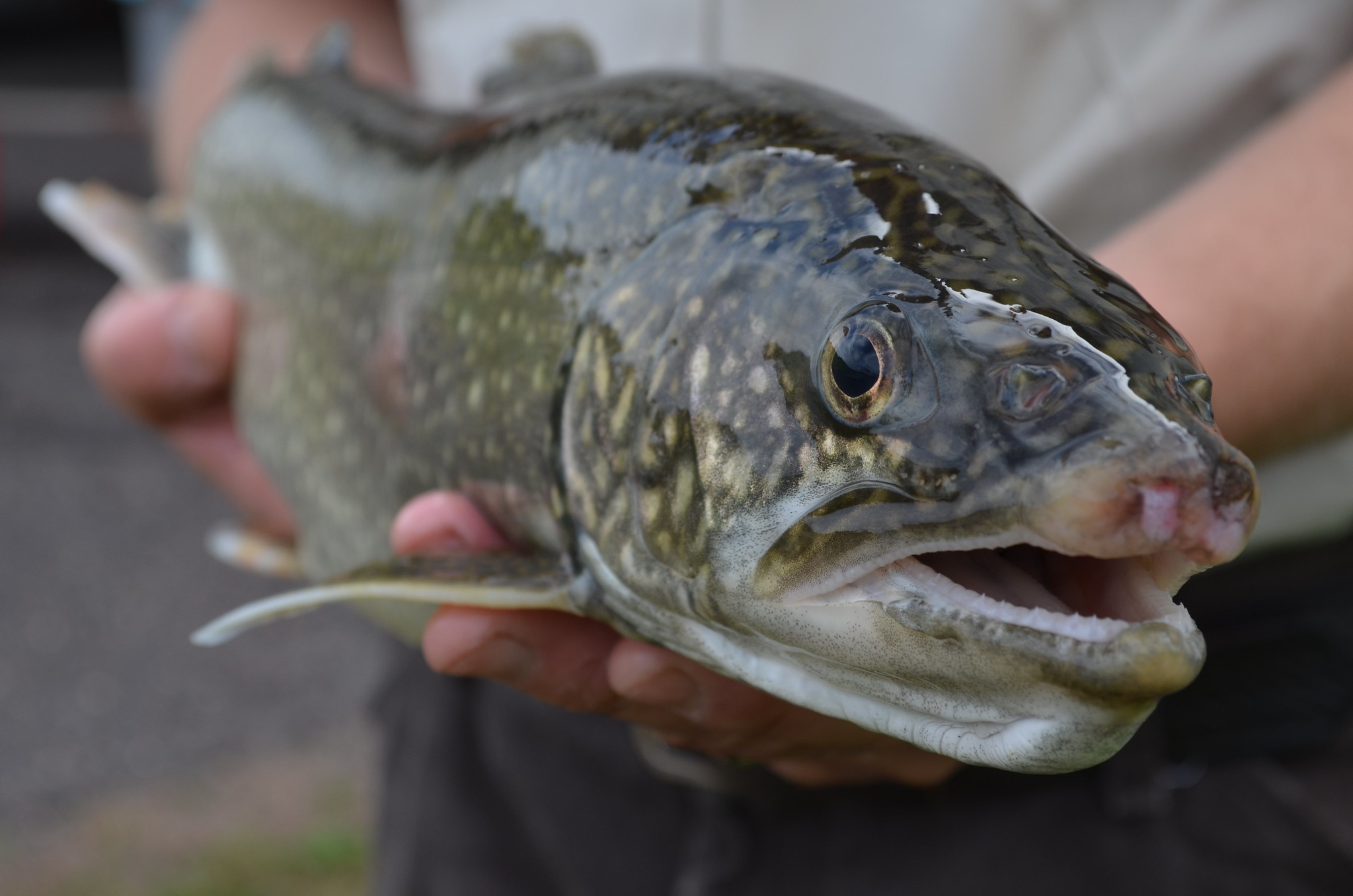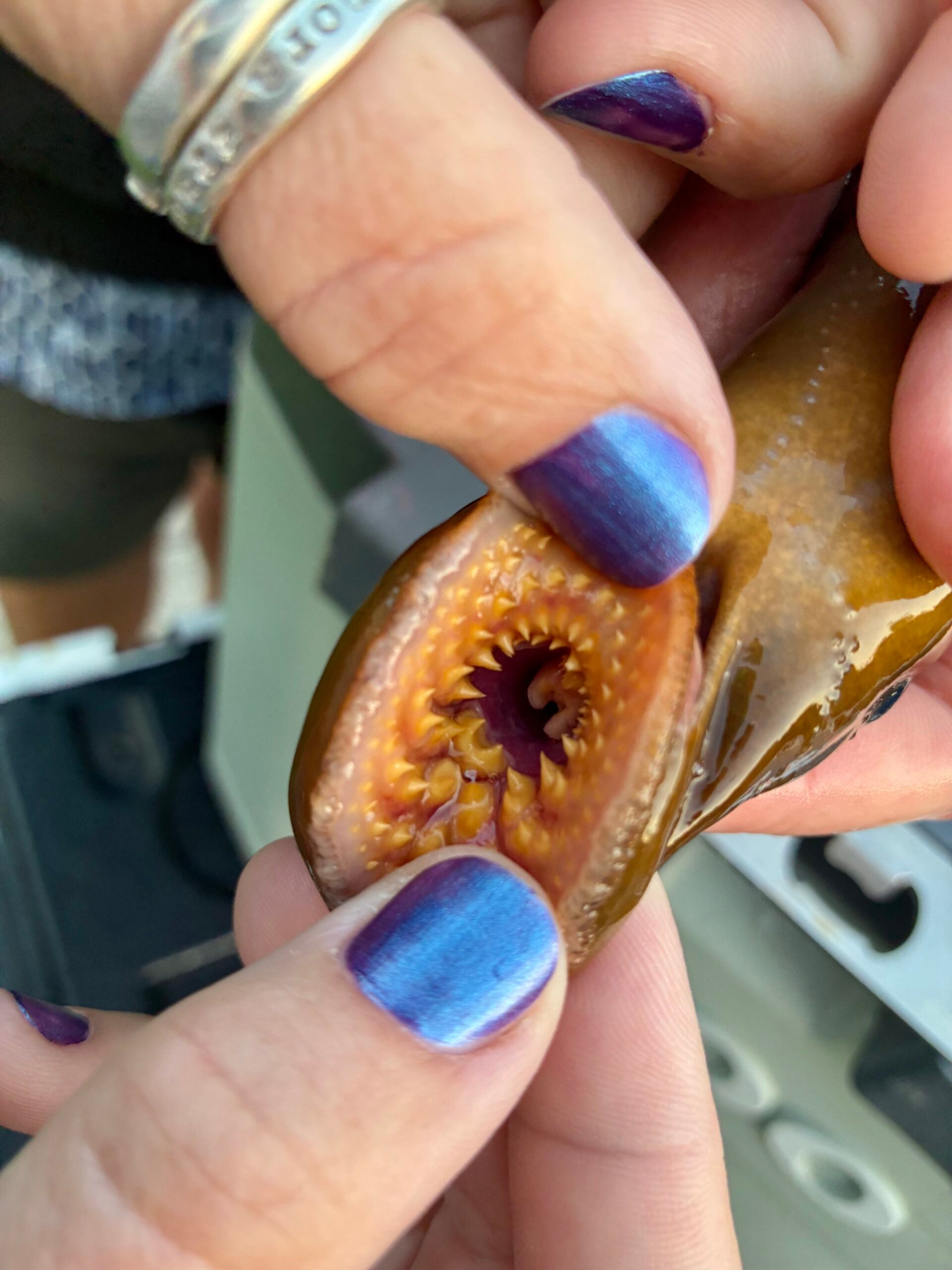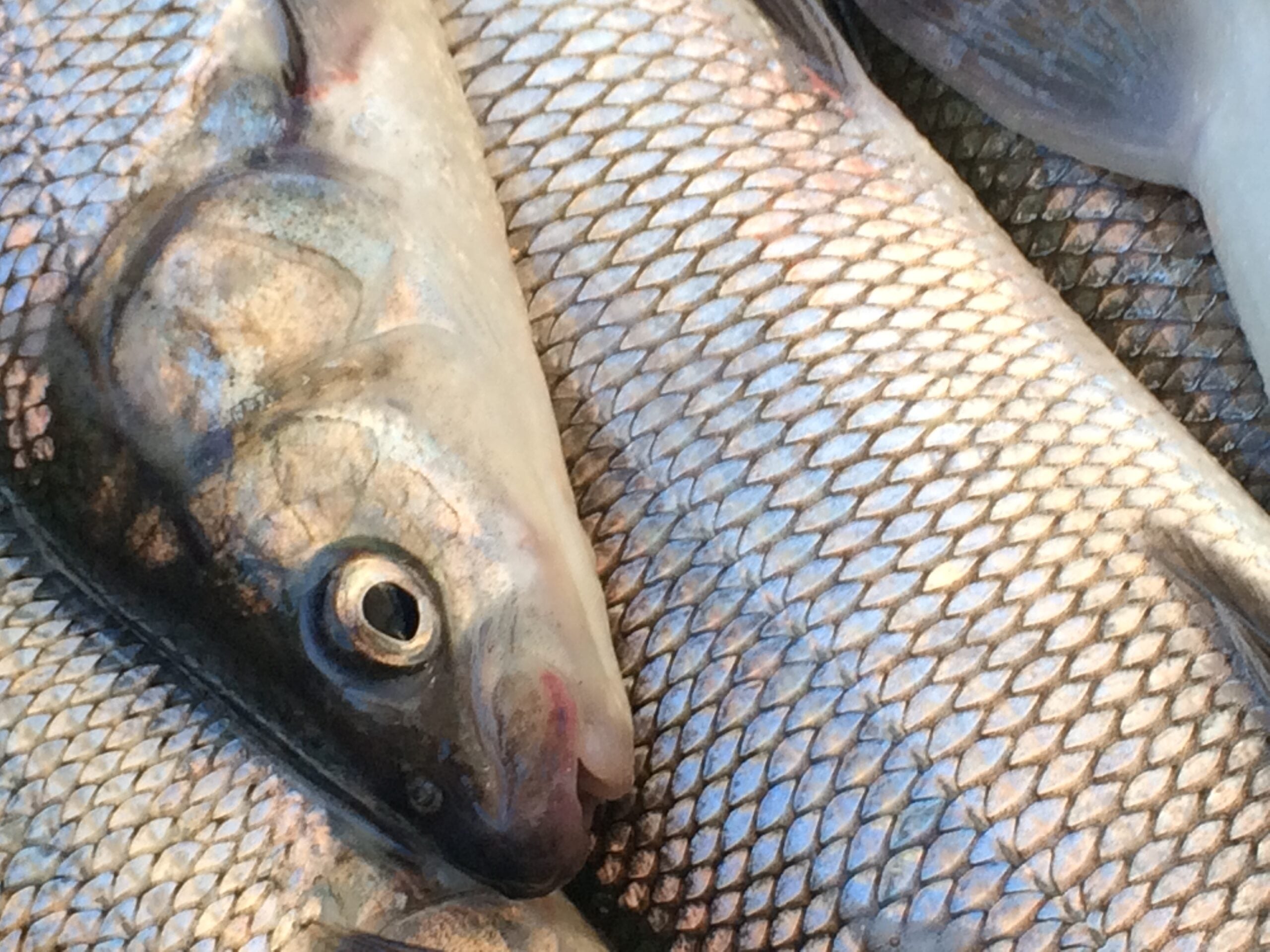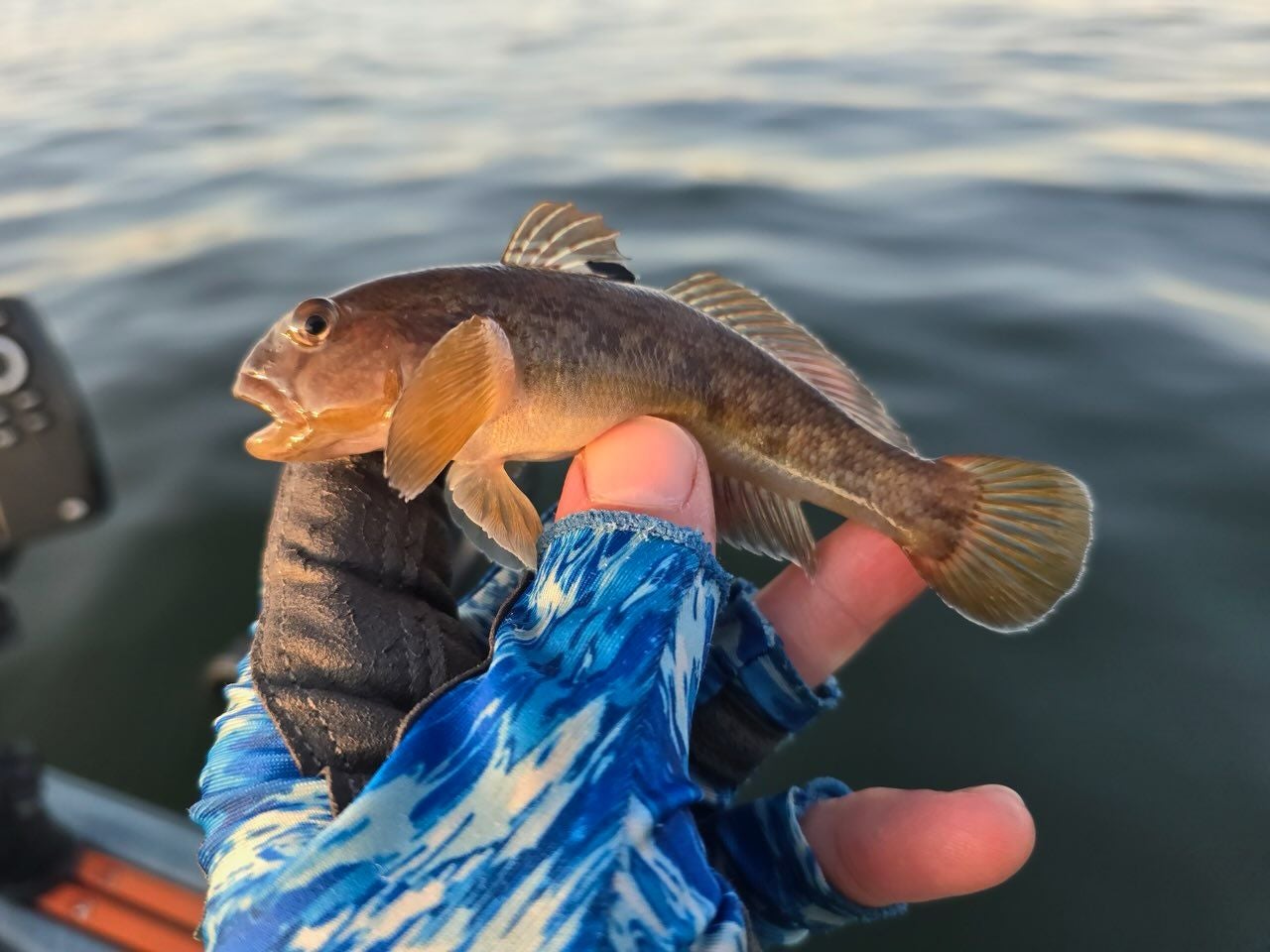After decades of work, fishery managers say lake trout have fully recovered in most of Lake Superior after the invasive, fish-killing sea lamprey decimated their numbers.
The Lake Superior Committee of the Great Lakes Fishery Commission, which is made up of state, tribal and Canadian natural resource managers, announced the population’s recovery Wednesday.
The lake trout population in Lake Superior dropped to dramatically low levels during the mid-1900s due to overfishing and an invasion of sea lampreys, eel-like parasites that suck the blood of their hosts. The parasitic fish spread to the Great Lakes from the Atlantic Ocean, invading Lake Superior by 1938.
News with a little more humanity
WPR’s “Wisconsin Today” newsletter keeps you connected to the state you love without feeling overwhelmed. No paywall. No agenda. No corporate filter.
Between 1920 and 1950, Lake Superior supported a commercial harvest of 4 million pounds, according to the committee. That dropped 95 percent to 210,000 pounds by 1964.
“We’ve been working on restoring lake trout in Lake Superior for over 60 years plus, basically since sea lamprey invaded and helped to crash the population,” Bill Mattes, chair of the commission’s Lake Superior Committee, said. “The restoration is now lakewide. Most areas of the lake are restored.”
Mattes is also the Great Lakes section leader for the Great Lakes Indian Fish & Wildlife Commission. While the exact population is unknown, he said annual assessments by agencies show as many or more fish in nets used to harvest lake trout as there were in the 1940s before sea lamprey became established in the lake.
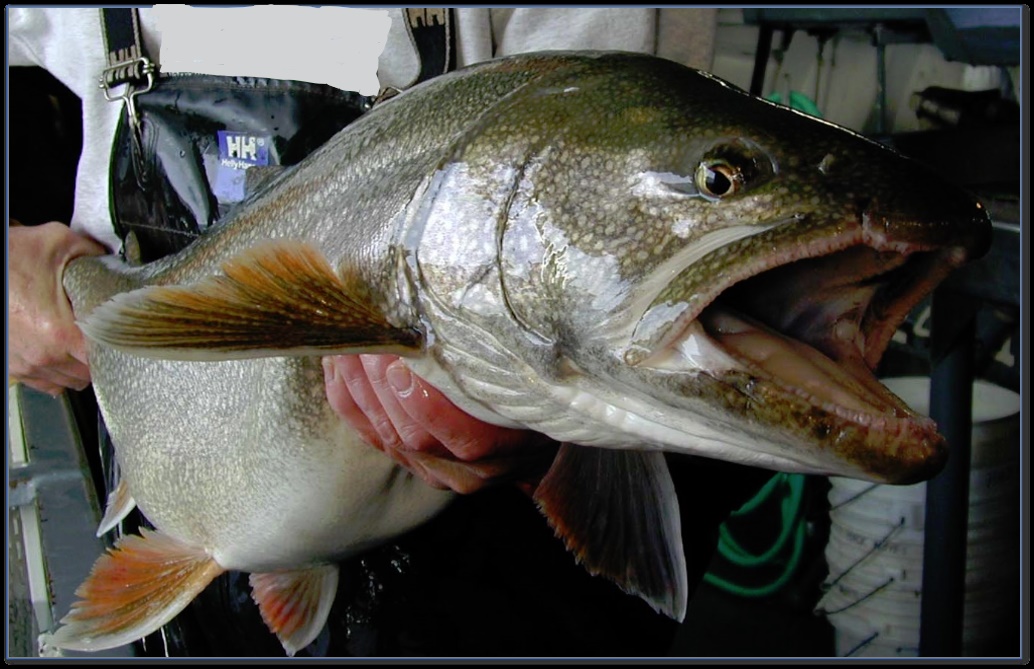
Binational effort worked to reverse the decline of lake trout
The dramatic decline in lake trout led the U.S. and Canadian governments to form the Great Lakes Fishery Commission. Members of the committee say the commission’s efforts to control sea lamprey and coordinate management along with conservative harvests and stocking have helped restore the population.
Brad Ray is the Lake Superior team supervisor with the Wisconsin Department of Natural Resources and the state’s representative on the committee. He said stocking was reduced in the mid-1990s as the number of naturally reproducing lake trout increased. By that time, Ray said, it was no longer necessary in the Apostle Islands region of Lake Superior due to the establishment of the Gull Island and Devils Island fish refuges, which protect two of the largest lake trout spawning shoals in the lake.
“The successful recovery in Lake Superior has helped restore some of the ecosystem stability along with valuable fisheries, the whitefish as the main fishery,” Ray said. “But we’ve also seen benefits to the cisco or lake herring populations.”
Commercial and recreational anglers harvested more than 463,000 pounds of lake trout, 2.1 million pounds of cisco and 2.4 million pounds of whitefish from Lake Superior in 2021, according to the committee’s most recent data.
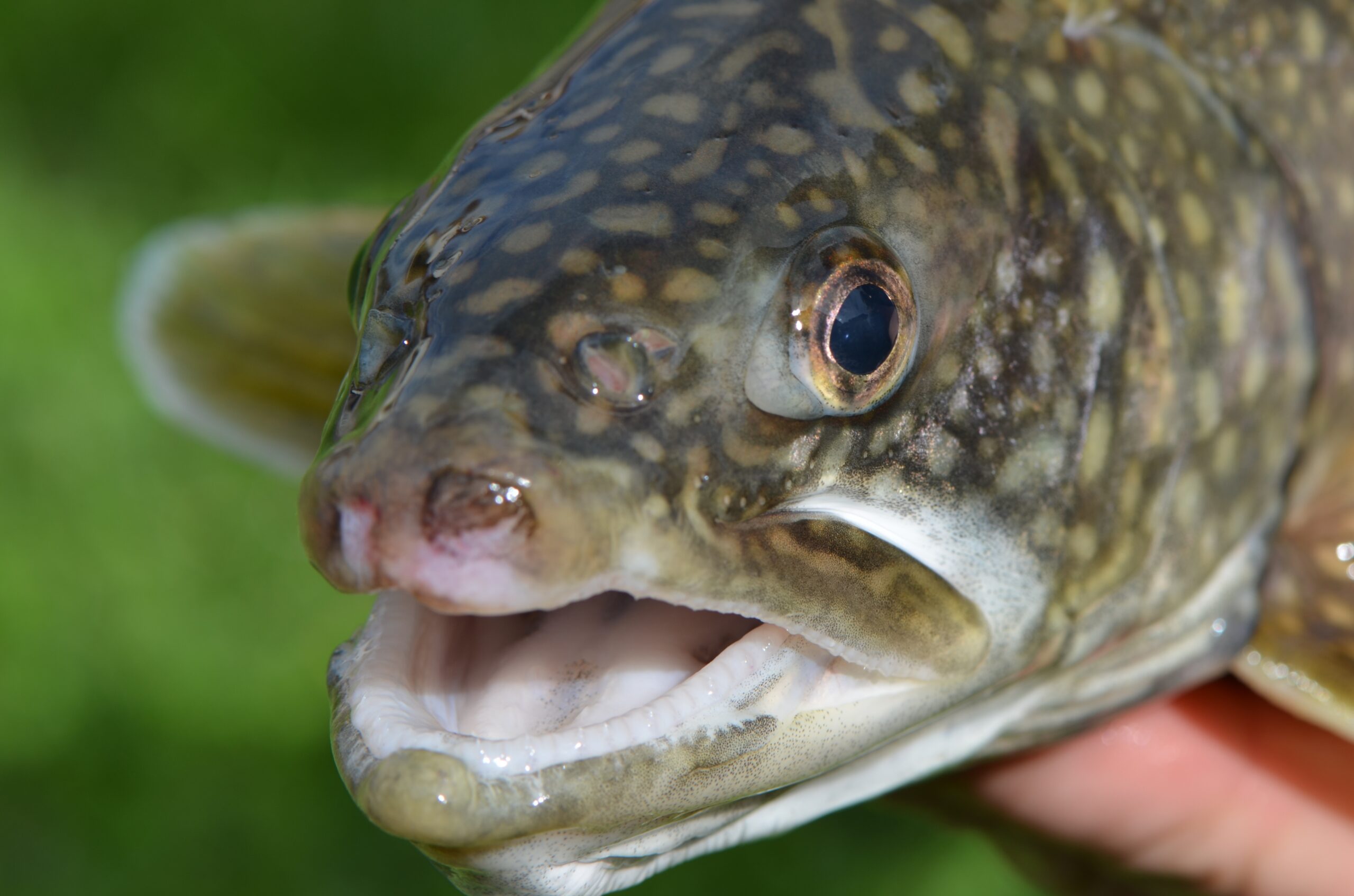
Fishery managers say work remains
The primary method to control sea lampreys is lampricide, a chemical that specifically targets the fish-killing invader. Mattes said it’s applied at very low levels to kill lamprey in streams before they migrate into the lake to feed. The use of barriers or dams is another major control. Other methods include portable traps to remove sea lamprey before they spawn or sterilizing male lampreys before they’re released.
Prior to such methods, sea lamprey numbered around 780,000 in Lake Superior.
“Sea lamprey are still an issue,” Ray said. “Our big issue on Lake Superior is we’re not meeting our benchmarks on sea lamprey.”
The most recent three-year average shows around 36,000 sea lampreys in Lake Superior, which is above the target goal of 10,000.
“We do have to keep the foot on the gas of sea lamprey control for this all to be successful,” Mattes said
While most areas have seen improvement, Mattes noted lake trout spawning has been affected by mining waste known as stamp sands in the Keweenaw Peninsula. The waste rock from past copper mining is eroding down the shoreline and covering a major spawning area for lake trout.
Ray added that portions of western Lake Superior from Cornucopia to Minnesota are not meeting benchmarks for the population, noting around 60,000 yearlings or young fish are stocked there each year. He said a quota of 14,000 lake trout has been in place there for the last three decades.
In waters around the Apostle Islands, the annual quota is almost five times higher at 67,000.
Wisconsin Public Radio, © Copyright 2025, Board of Regents of the University of Wisconsin System and Wisconsin Educational Communications Board.

